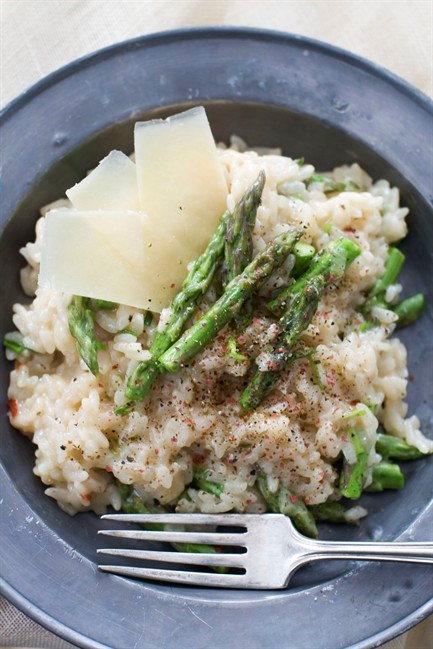Pressure cookers never really did much for me. They seemed fussy — and scary! All those stories about explosions...
Then I used one to make a risotto, a dish that by definition is tedious to make. I was blown away. It simplified the process and — most impressively — sped it up. What normally takes me 45 minutes in a traditional saute pan was done and ready to serve in about 20. That's my type of risotto! And my type of pan.
Pressure cookers really are very cool devices. Because the lids clamp on and create a pressured, steam-driven environment, they allow you to cook at higher temperatures. Normal boiling or steaming cooking methods max out around 212 F, the boiling point of water. Pressure cookers allow for water (as steam) to be superheated, reaching as high as 250 F.
The result is a moist, quick method of cooking that produces deliciously tender meats in little time. And modern pressure cookers also happen to be very safe (don't worry about explosions!).
My risotto recipe is simple and delicate because I wanted it to showcase the asparagus. But it would be easy to add a touch of garlic, your favourite mushrooms and even tender spring peas.
The second time I made it, I added porcini mushroom powder and it was divine, resulting in a bolder, more umami filled risotto without any mushroom slices. The garlic and mushrooms — or porcini powder — should go in at the beginning and peas should be added when the asparagus is to let the heat of the steaming rice cook the tender vegetables.
I have never had so much fun making risotto. Now that I have the hang of using the pressure cooker, I can't wait to tackle short ribs, chicken Marbella, whole stuffed artichokes and grits, too — anything that normally takes hours and/or lots of stirring to make!
___
PRESSURE COOKER RISOTTO WITH ASPARAGUS
The asparagus is added raw to the rice after it is cooked, letting the delicate green stalks cook just briefly. This light touch leaves the asparagus bright green and slightly crunchy. If you like your asparagus cooked more, you can grill or saute it briefly before adding it to the risotto. But do not add it to the pressure cooker at the same time as the rice or it will overcook.
Start to finish: 45 minutes
Servings: 4
2 tablespoons extra-virgin olive oil
1 large shallot, chopped or thinly sliced
1 cup Arborio rice
1/2 cup white wine
2 cups no-salt chicken broth
Pinch of salt, plus more to taste
Pinch of red pepper flakes
1 tablespoon butter
1 cup small asparagus tips and tops, cut into 1-inch pieces
1 cup shredded Parmesan cheese
2 tablespoons chopped fresh chives
In a medium pressure cooked over medium, heat the oil until shimmering. Add the shallot and saute for 2 to 3 minutes, or until translucent. Increase heat to high and add the rice, stirring to coat. Toast the rice, stirring constantly, for 2 to 3 minutes. Add the wine and cook until evaporated.
Add the broth and a pinch each of salt and red pepper flakes. Stir until the mixture comes to a simmer, then lock on the pressure cooker's lid. Set a timer for 9 minutes. Bring the cooker up to full pressure, then reduce the heat to maintain that level. Cook until the timer goes off.
Take the cooker off the heat and wait 3 minutes, then put the pot in the sink and run cold water over it to release the pressure. Open the cooker; the rice should be creamy. Return the pot to the stovetop over medium heat. Add the butter, asparagus, cheese and chives. Stir until heated through and the butter and cheese have melted. Season with salt and pepper.
Nutrition information per serving: 420 calories; 160 calories from fat (38 per cent of total calories); 18 g fat (7 g saturated; 0 g trans fats); 30 mg cholesterol; 42 g carbohydrate; 3 g fiber; 1 g sugar; 18 g protein; 540 mg sodium.
___
EDITOR'S NOTE: Elizabeth Karmel is a grilling and Southern foods expert and executive chef at Hill Country Barbecue Market restaurants in New York and Washington, as well as Hill Country Chicken in New York. She is the author of three cookbooks, including "Soaked, Slathered and Seasoned."



